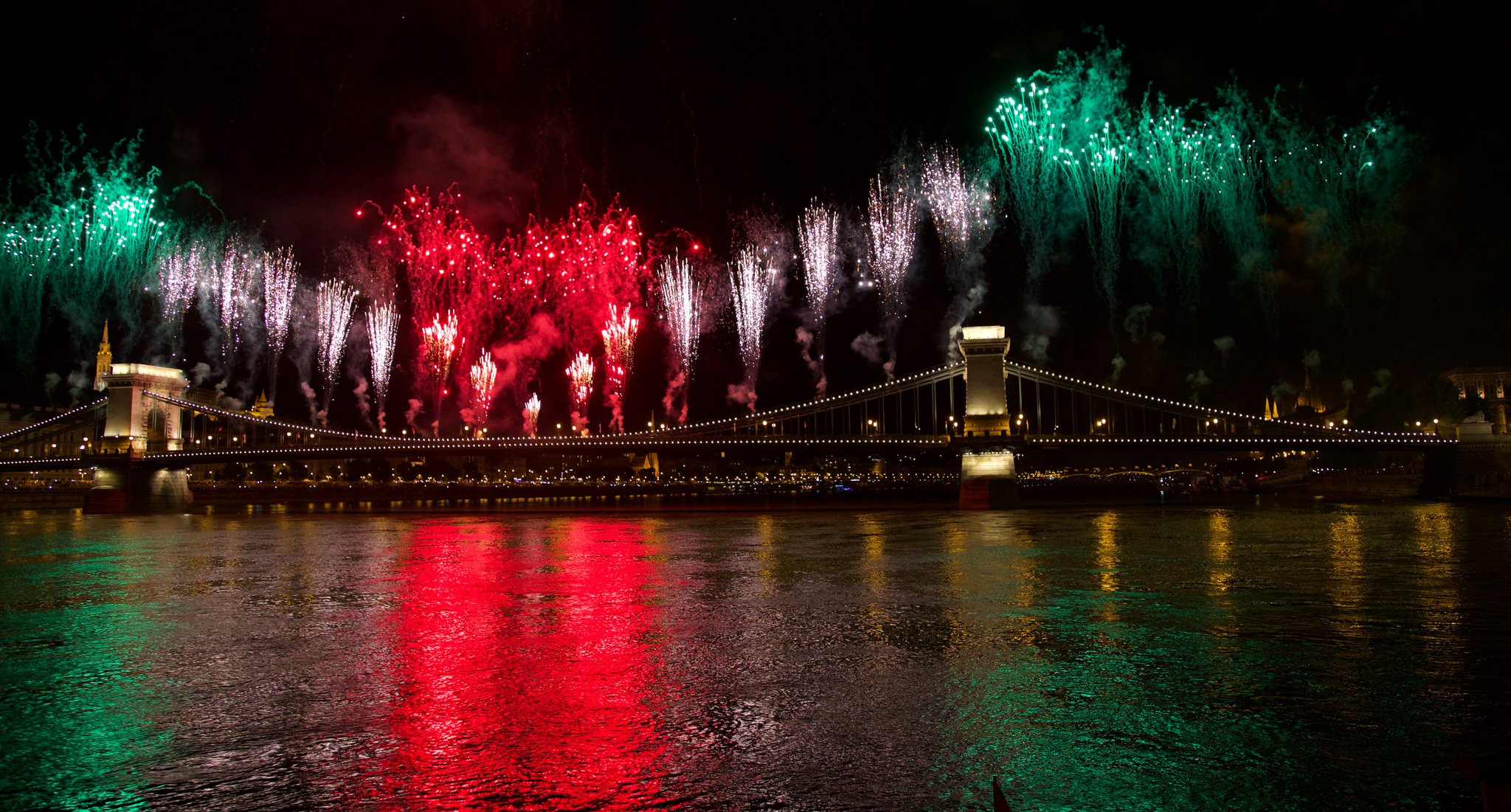Hungary is a place of beauty and complication. Magyars, from west of the Ural Mountains in Russia, ultimately settled into the middle basin of the Danube River Valley. They came to rule the fertile lands of the Carpathian Basin and 895 is generally agreed as the date when Magyars took control of Hungary.
Elements that make Hungary complicated are location, language, and politics. The rich soils of the Carpathian Basin enable Hungary to be a food exporter. But the lay of the land also allows invading armies to traverse the terrain easily and facilitates a pathway for invasion, conquest, and war. Hungarian is a language foreign to nearly every other European country. It is understood in Hungary, Estonia, perhaps Finland and some areas of Siberia. (The largest diaspora of Hungarian speakers is in the United States and Romania, though the latter is a result of the Treaty of Trianon.) Politics also has played a significant role in Hungary’s history; political choices in the past century or so have not always been in the best interests of average Hungarians.
But the land of the Magyars remains a beautiful place with a rich history even as political leaders struggle to find a comfortable place for their country in the European family of nations. The following photos depict just a few of the many facets of Hungary.

The summer fireworks show is excellent and the event draws huge crowds who gather at all sorts of spots on both sides of the Danube River.

Chain Bridge is an iconic landmark and serves as the backdrop of the fireworks extravaganza. In the aftermath of World War II, the bombed-out bridge was among the first restoration projects of the Hungarian government.

A view of Chain Bridge from the Buda side of the city with Pest in the background. The bridge is heavily used and plans call for an extensive rebuilding and upgrades that will include improvements that are both structural and aesthetic.

The countryside of Hungary is bucolic, with gentle hills, lush forests and a fertile plain. It is little wonder the Magyars migrated here from a harsh climate west of the Ural Mountains in what is now Russia. Over the centuries warring armies swept back and forth across the Carpathian Basin.

Hollókü Castle is part of an ethnographic restoration project. The fortress is one of many that can be found in Hungary and it serves as a reminder of the challenges Magyars had in maintaining control of their country. It is also a UNESCO World Heritage Site.
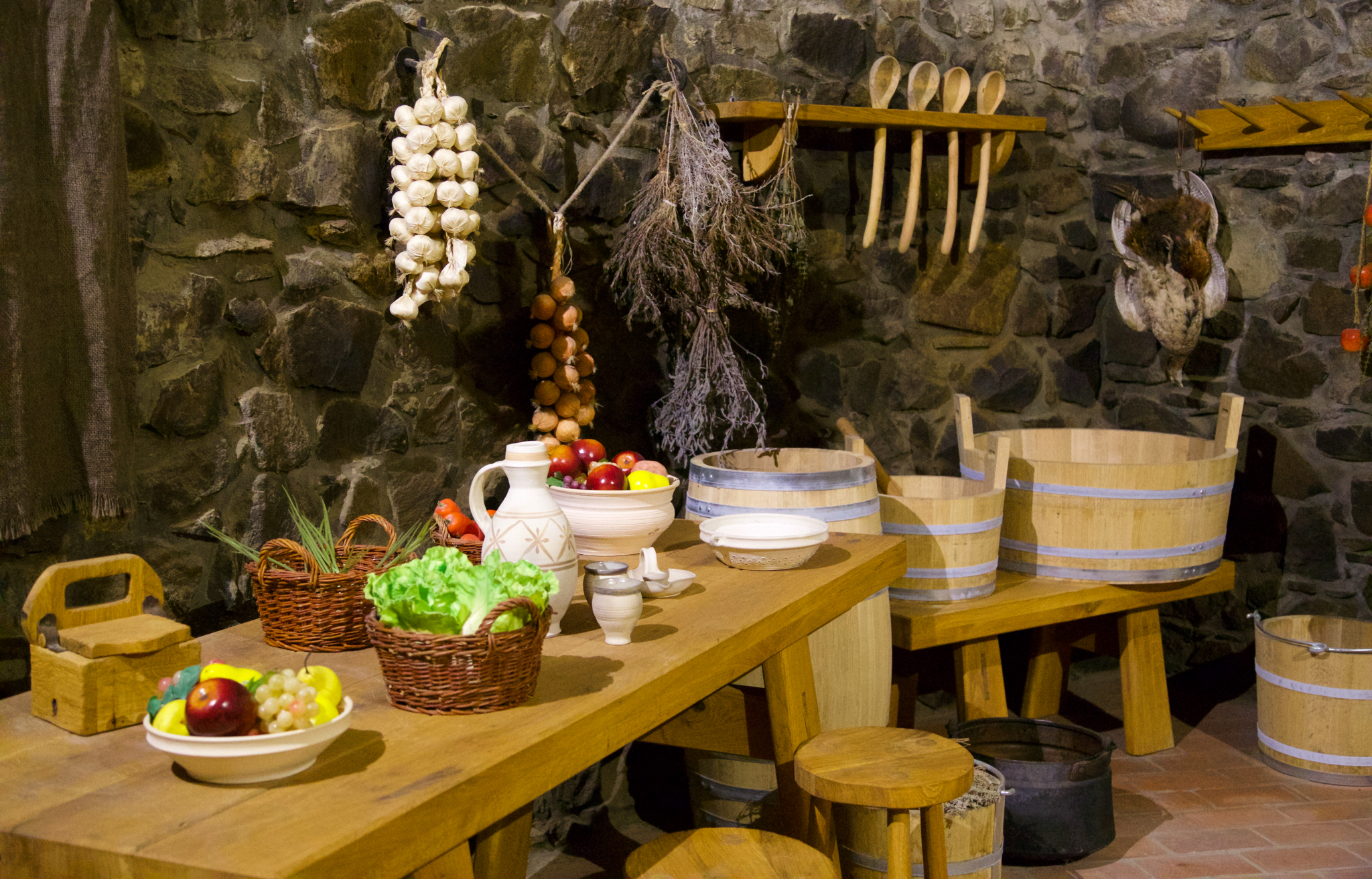
Every good castle needs a kitchen where food can be stored, meals are cooked, and cooking and eating utensils are kept. The items in this photo would have been easily produced or procured centuries ago.

Hungary is like any other country in that soldiers have always been called upon to protect the homeland — or invade enemies. Here a group of Hungarian soldiers march and drill for a diplomatic ceremony on the Buda side of the capital city.

A pair of soldiers on the Castle grounds of Buda display some of their precision close-order skills as they twirl, flip, and exchange their rifles.

The Magyars were able to occupy and rule the lands of the Carpathian Basin in large part because of their cavalry skills. Magyars were the first, but later the Hussars, an elite cadre of cavalry, became an important part of Hungary’s armed forces.

Today, the Hussars are co-ed, but their traditions and uniforms remain much the same. The elaborate finery of their uniforms is showcased with rich colors, detailed piping, knee-high boots, brass boot spurs, and a distinctive manner of dress. The right sleeve of their coats is kept off-shoulder to make it easier for them to wield sabres in combat. A group of soldiers enjoys a relaxed moment before an important parade in Budapest.

Szentendre is home to Skanzen, the Hungarian Open Air Museum. Just 12.5 miles from Budapest, an idyllic train ride transports visitors back to an earlier time in Hungary’s history. Performers in period costume entertain visitors, and occasionally, when politely asked, pose for a group photo.
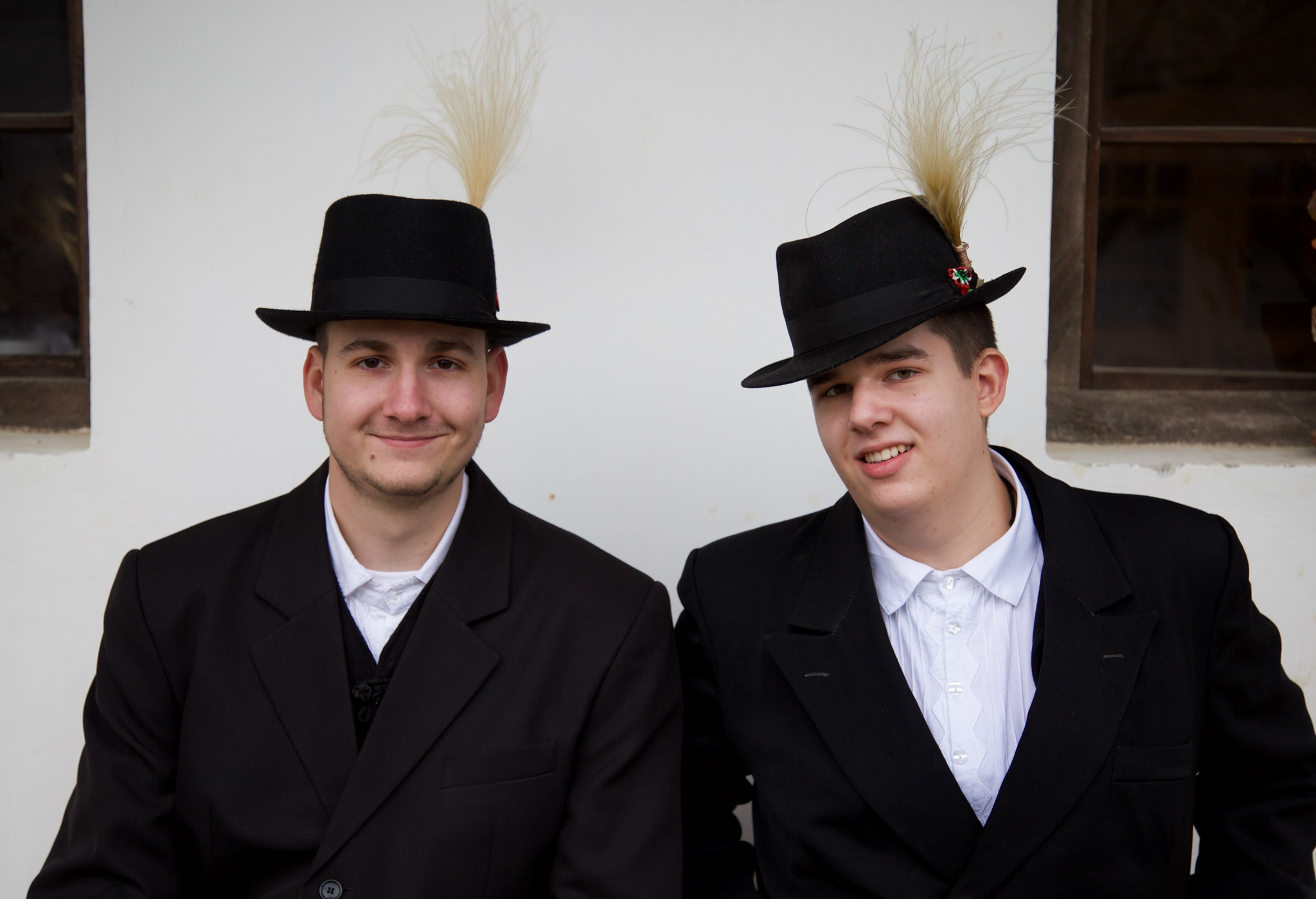
A pair of friends, dressed in traditional outfits, pause for a moment outside a cottage at the Hungarian Open Air Museum in Szentendre.
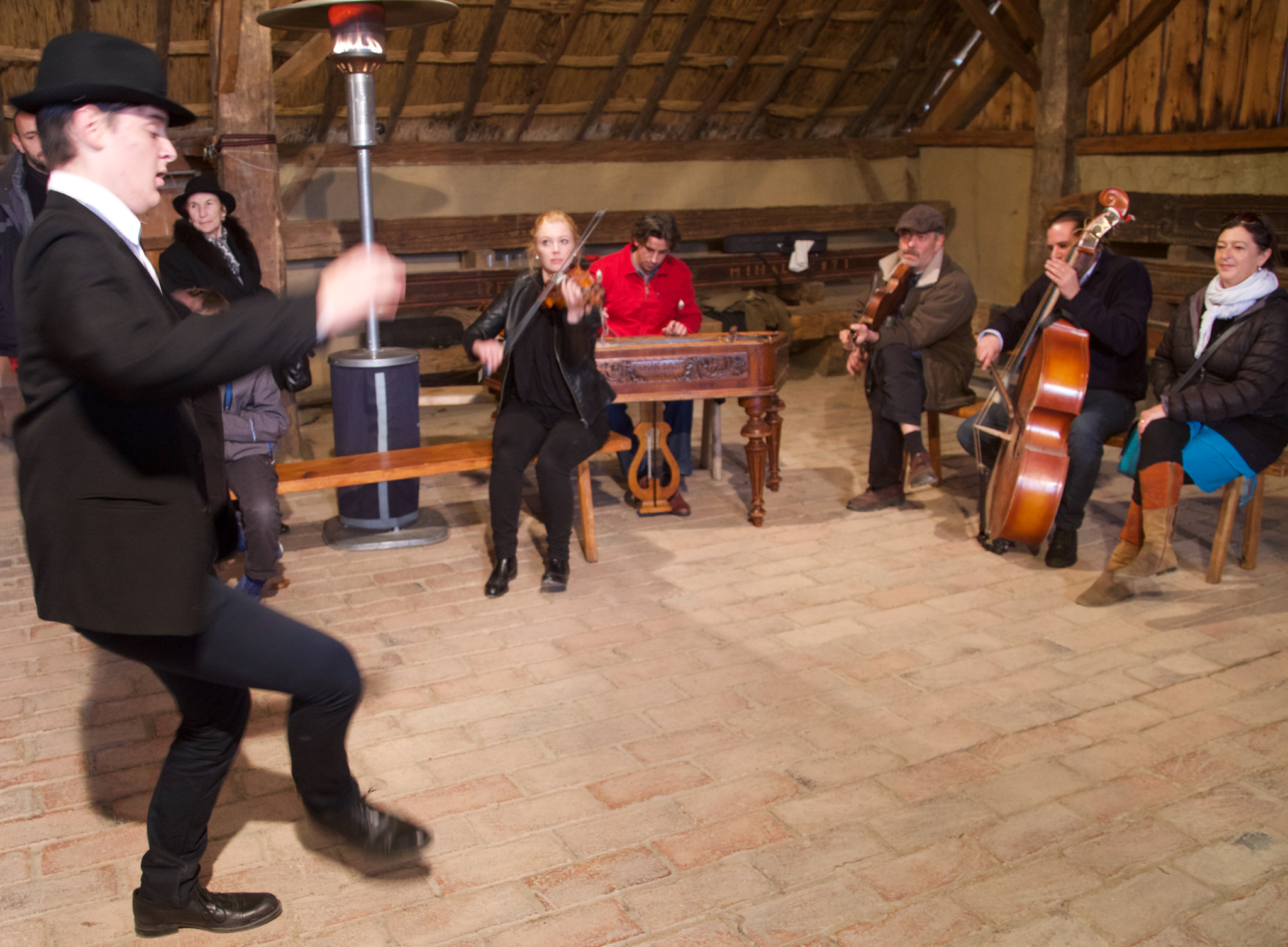
A young man stops by at the Open Air Museum at Szentendre to dance to the music. The male dancers are flamboyant, high-stepping as they slap their boots in dervish-like fashion.

A bit of history meets up with modernity as a quartet of musicians play traditional Hungarian songs. The man playing dulcimer, second from left, plays an instrument made by Bohál Lajos, a company considered to be the premier maker of dulcimers, a string instrument whose tightened chords are struck lightly with hammers.
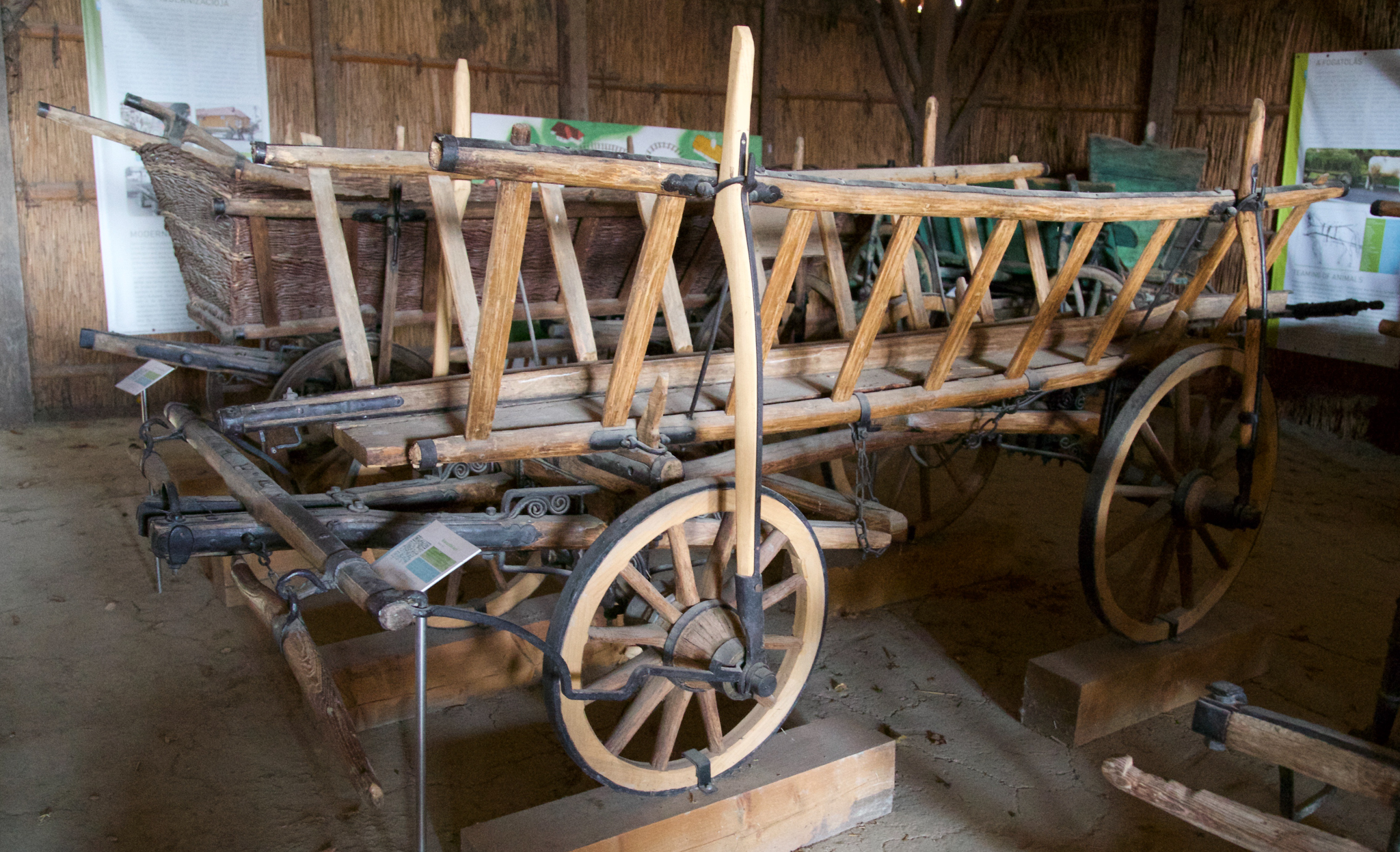
The Open Air Museum of Hungary in Szentendre includes a barn which displays a few of the various kinds of carts, wagons, and other cargo haulers that transported goods, foods, and personal effects from village to village.

Mindszentkálla is a small village of several hundred residents a few miles north of Lake Balaton, the largest lake in Central Europe, and one of the country’s premier wine-growing regions. A worker tends a small vineyard of old growth white grapes.

There are a number of reasons why these white grapes are still on the vine. A common reason is the grapes are destined to be made into a dessert wine. One method of dessert wine production is to leave grapes on the vine and let them ‘rasinate’ to raise their sugar content before harvest. Hungary produces a number of high-quality dessert wines. Other reasons grapes may still be on the vine is all the production from that field had been sold, so there’s no need to spend money to harvest them.

For those who enjoy good wines, Etyek is a delightful wine festival. Hungary has been producing quality wine for centuries. The country has 22 wine producing regions, with 31 designated varietals. Tokaji, a sweeter white wine, is most commonly associated with Hungarian wine making, and conversely, gave Hungary’s wine-producing a ‘so-so’ name. But fans of good wine know that Hungary makes a range of top quality wines, reds, whites, and rosés.
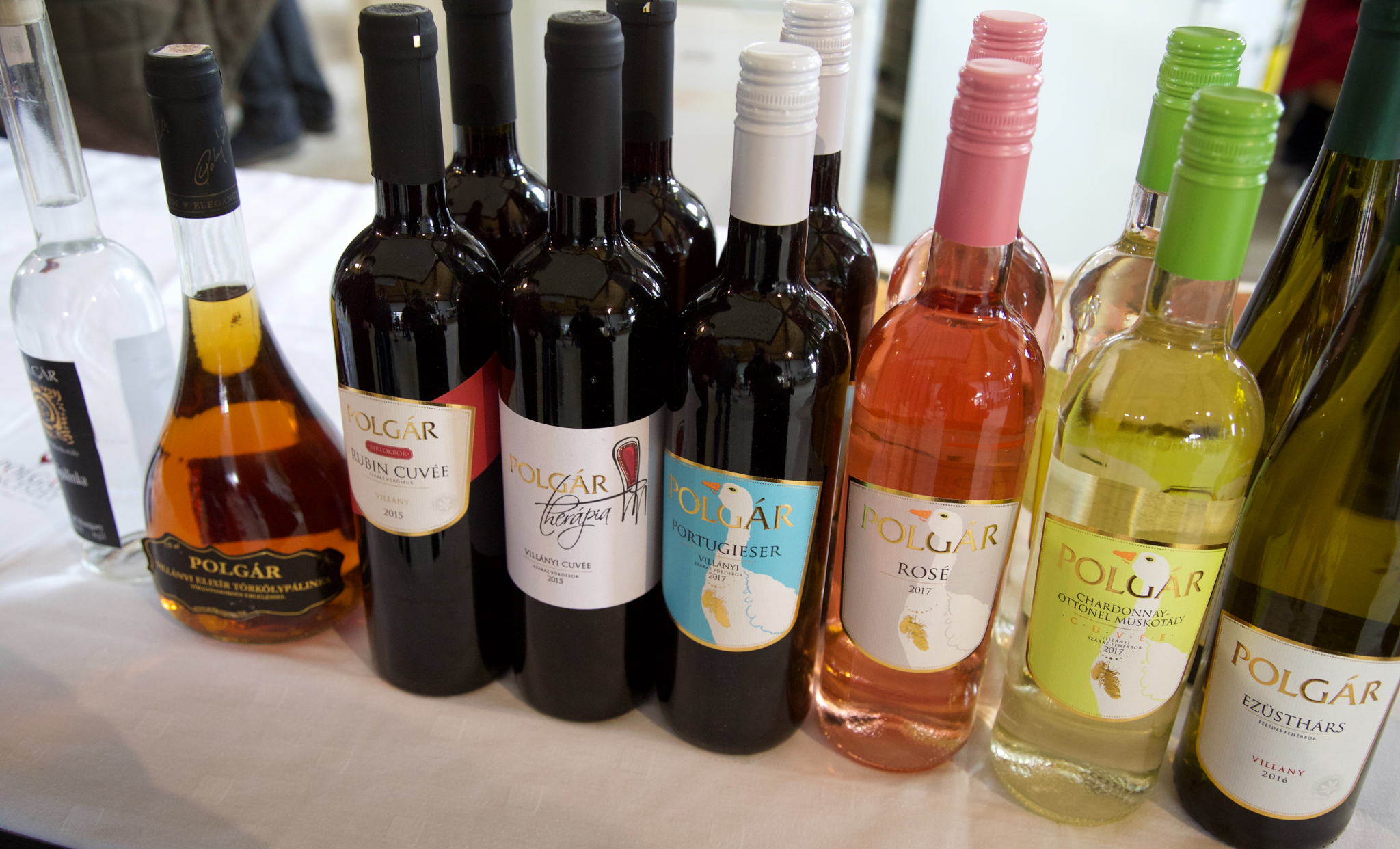
Communism, and the disastrous idea of central planning had a terrible impact on Hungary’s wine industry. Hungarian Communist rulers (August 1949 to October 1989) forced winemakers to sell their grapes to centrally-sanctioned producers with no interest in producing high quality, only large quantities. The result was cheap high alcohol “buzz wine.” But after Communists were ousted the Hungarian wine industry has reasserted itself in the past few decades. Hungarian producers now turn out a number of high quality wines, of which these are just a few.

Make no mistake; Hungarians are smart, and they know how to make a wide range of quality products. At the Etyek wine festival, this lovely bottle of wine was highly praised by the visitors who attended the celebration.

A pair of Hungarian friends, center, show a foreign visitor, left, some of the excellent wines, cheeses and foods to be found at the Etyek festival, as the vendor, right, weighs out a wedge of cheese that has been selected by the trio.

A pair of women lace makers chat as they work at a festival in Budapest.

This group of mean are playing dudas, which look and sound very much like Scottish bagpipes. Though not as elaborate as those from Scotland, they are made in the same general way, played much the same way, and have that distinctive sound bagpipers love.

In Budapest, street festival vendors prepare a feast for a crowd that will soon be noshing delicious foods and enjoying great beers and wine.

The Green Market, in District V, is a must-stop spot for tourists who want to catch a glimpse of Hungarian foods and take in a bit of culture. The market is an excellent place for tourists and visitors to purchase handicrafts, a wide variety of foods, and gifts to take back home. This woman operated a stall on the lower floor but she always does a brisk business selling eggs and other staples, weighing out the amounts and charging accordingly.

Budapest has a number of outstanding dining opportunities, and Kispiac Bistró, just around the corner from the U.S. embassy in Budapest, offers amazing Hungarian-inspired dishes. The restaurant is small, so make a reservation, be adventurous, and order local dishes like duck or wild boar.

Central Bar and Cafe on the Pest side of the city in District V evokes a time long past when patrons can sit and enjoy the string trio as they nosh on pastries, desserts, coffee, glasses of wine, or beer.
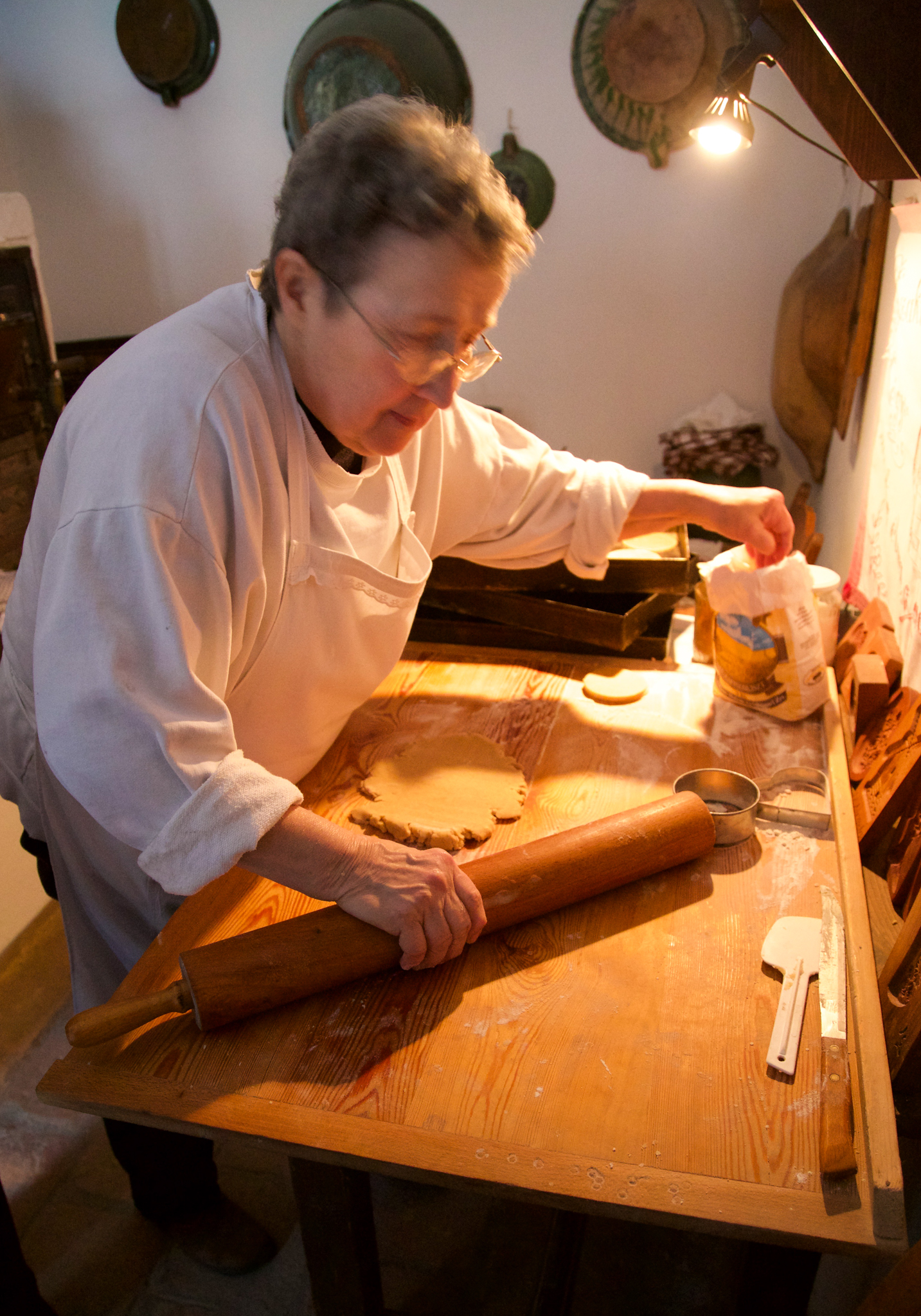
Baking is in many respects chemistry — ingredients are blended and processed (in this case with heat) and something hot, fresh, and tasty results — breads, pies, cakes, pastries, and delightful desserts. Here, a skilled baker at Skanzen multi-tasks, rolling out dough while reaching for more flour to get another treat into the oven.

To the uninformed, this might look like a pair of pigs that just left the beauty parlor. But to lovers of porcine foods, it doesn’t get any better than this. These are Mangalica, a long, curly-haired Hungarian breed of pig that was crossbred with wild boar and Hungarian domestic swine well over a century ago. This pair is red (more ginger, to be honest), while there are also swallow-bellied, and blond types. They have a higher fat content than domesticated pigs and a rich, succulent flavor. Total annual production is small compared with domesticated pigs. Available throughout Hungary they also can be found in some European countries, and a few places in the United States.
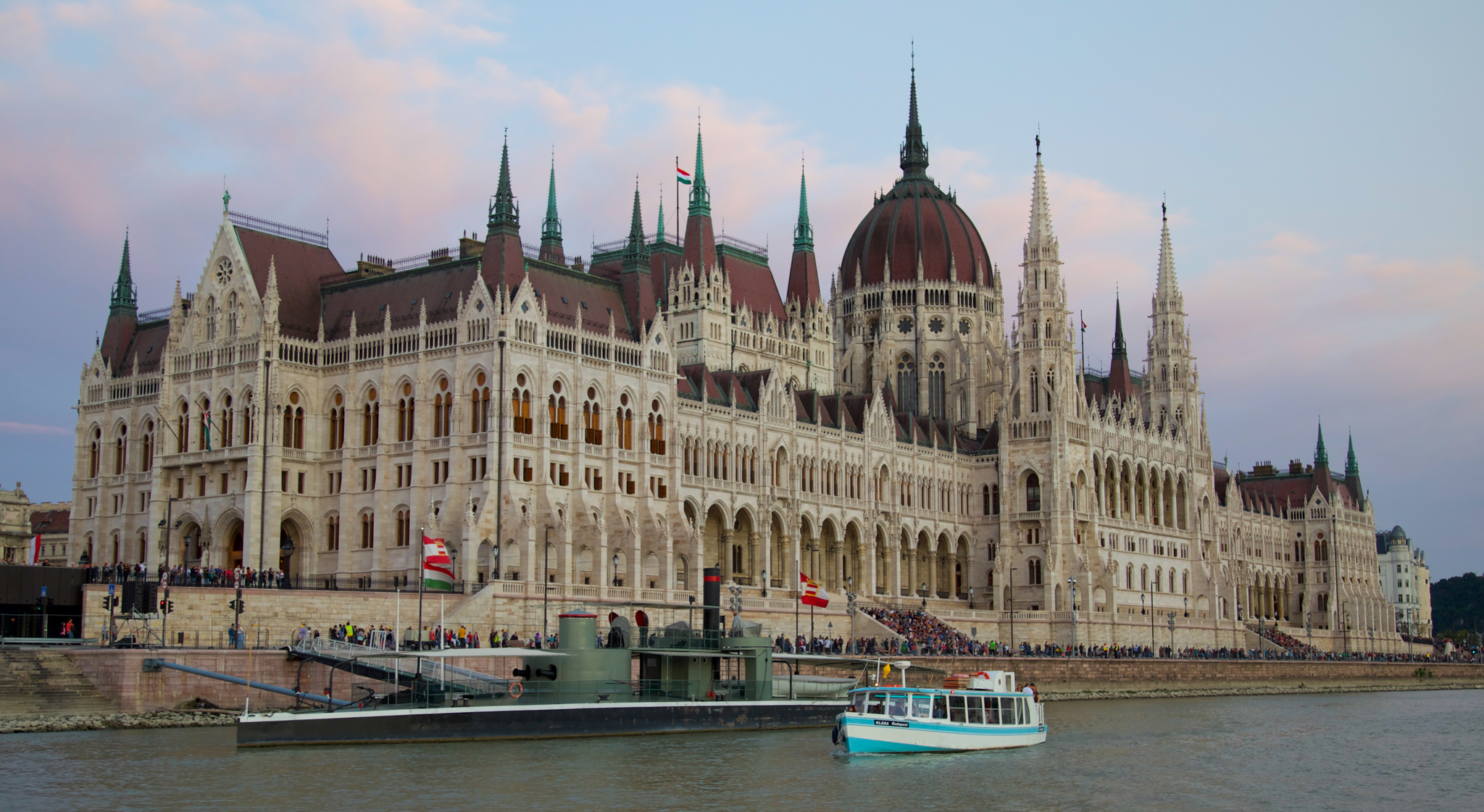
The Hungarian Parliament building along the Danube River on the Pest side, is a remarkable example of Gothic Revival architecture. Architect Imray Steindl designed the building and construction began in 1885. It was completed in the first few years of the 20th Century. The Holy Crown of Hungary can be found in the central hall (though photographs of the crown are forbidden).

The balance and symmetry of the Hungarian Parliament building in unmistakable, and while it appears to have been constructed as a bicameral legislative building, the more recent iterations of Hungarian government has reduced it to a one-house chamber with super-majority rule by Fidesz, a right-wing populist and nationalist conservative party, firmly ruled by Viktor Orbán.

Budapest is among Europe’s most beautiful cities. It is a collection of architectural styles that include Baroque, Art Nouveau, Bauhaus, Gothic, and others. A signature element of many of the buildings in Hungary are the rooftops, many of which are adorned with Zsolnay tiles, manufactured in the historic city of Pécs. This is the old post office building.

Pécs is a very old city in southwest Hungary, not far from the Croatian border. The area was first settled by Celts and Romans and is home to the oldest university in Hungary.

Matthias Church, or the Church of the Assumption is a Roman Catholic Church first constructed in 1255. It is located in front of the Fisherman’s Bastion in the heart of the Buda Castle district.

Matthias Church as seen at night.

Budapest is an excellent city to walk in and appreciate the architecture, but it also has excellent public transportation. Subway lines can be found throughout the city, as well as trolley cars and articulated buses. Hungary is credited with having invented the articulating bus, versions of which can be seen around the world. This stop is in front of the famous Central Market in District V.

The Number 2 trolley line which runs along the Danube River on the Pest side of the city has a signature look during the Christmas season. The cars are festooned with twinkling lights which makes for a fun ride.

All Saints Day, November 1, is a special time in Hungary, just as it is in many countries around the world. The practice of lighting candles at the graves of departed loved ones began as a superstition to help guide lost souls beck to their graves.

Tradition is handed down from older generations to younger ones. Here at a cemetery in Budapest, a child lights a candle in remembrance.

Dr. Csanádi Árpád is an esteemed figure in the world of Hungarian sport. He was a champion football (soccer) player, coach, sports manager, sports diplomat, education teacher, and honorary professor. He was a standout player on Budapest’s FTC team. From 1958 until his death he served on the Hungarian Olympic Committee, and also as a member of the International Olympic Committee.
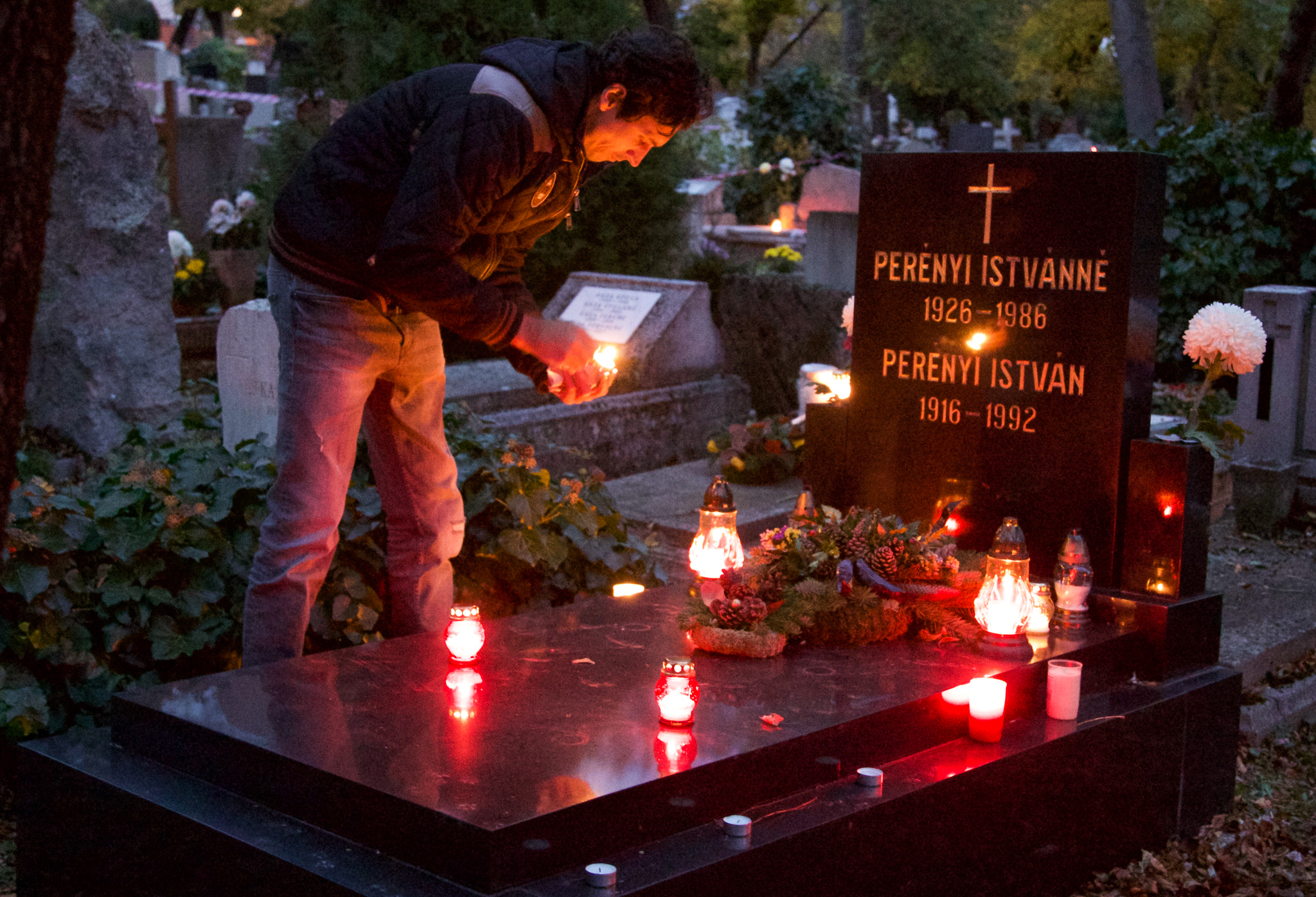
Love and devotion to family is a trait common in countries around the world. Here, a man lights a commemorative candle at the family grave site.

Heroes’ Square is a focal point, popular tourist spot, and locale for public demonstrations. The sprawling site features several important elements, including the Millennium Monument, the Seven chieftains of the Magyars, and other notable figures from Hungarian history. The size and location of the square makes it a popular gathering spot for disaffected citizens to gather and vent their frustrations at the government.

The Seven chieftains of the Magyars at Heroes’ Square memorializes them as the leaders who brought the Magyars to Hungary. Árpád, in the center, is considered the founder of Hungary. Flanking him are the chieftains Elöd, Ond, Kond, Tas, Huba, and Tétény. Despite their importance in the founding of Hungary, little is known of them, or their histories.

If you were to visit the area of the Hungarian Parliament, and stopped by Martyr’s Square, this impressive statue of Imre Nagy would have been a focal point. But now it has been unceremoniously moved. Nagy was a communist who served as the (de facto) prime minister of Hungary from 1953 to 1955. In 1956 he was a leader who attempted to break away from the Soviet Union. The 1956 rebellion was harshly put down, and in 1958 Nagy was hanged for his “crime.”. He was revered in Hungary. Even Fidesz party leader Viktor Orbán once glowingly spoke of Nagy’s place in Hungarian history. But as Orbán cemented closer ties with Russian President Vladimir Putin, the statue became a sore point. Late in 2018 Hungarian officials had it moved to another, out-of-the-way location.

Oppressive political regimes commonly practice a techniques where they make someone the enemy — an agitator to point a finger at and blame for the nation’s troubles. Viktor Orbán and the Fidesz party have chosen to vilify George Soros. Born in Budapest in 1930, Soros, a (non observant) Jew, survived the Holocaust, later moved to Great Britain, and then the United States, where in the process he amassed a fortune of billions of dollars. Over the decades he has donated more than $11 billion dollars of his fortune to philanthropic causes like the Open Society Foundation, including funding for Central European University. Viktor Orbán and the controlling Fidesz party espouse an idiot-logic nationalistic approach to promote an “illiberal democracy.” Posters of Soros being portrayed as the bogeyman could be seen throughout Budapest, on street corners and in metro stations. The copy on the poster roughly translates to “99% Reject Illegal Immigration. Do Not Let/Leave Soros Laugh in the End!”
